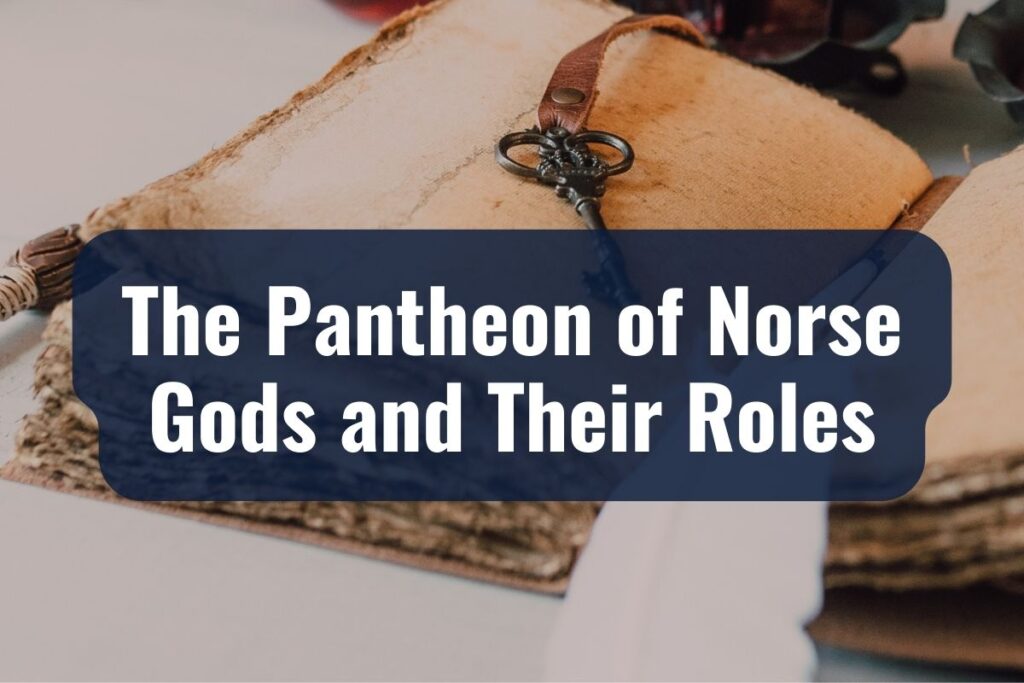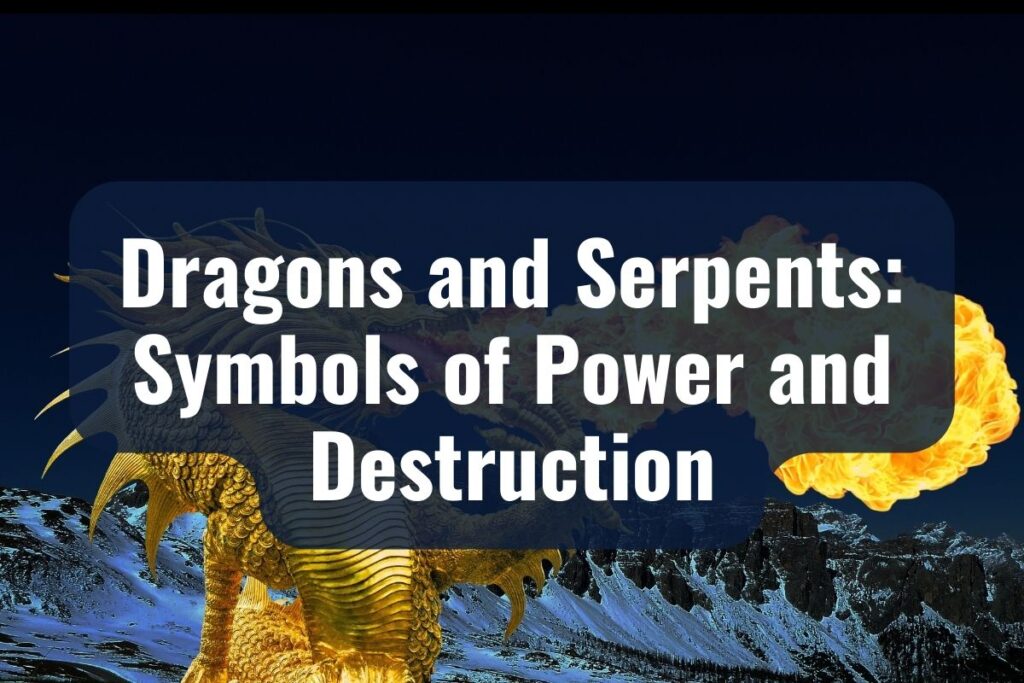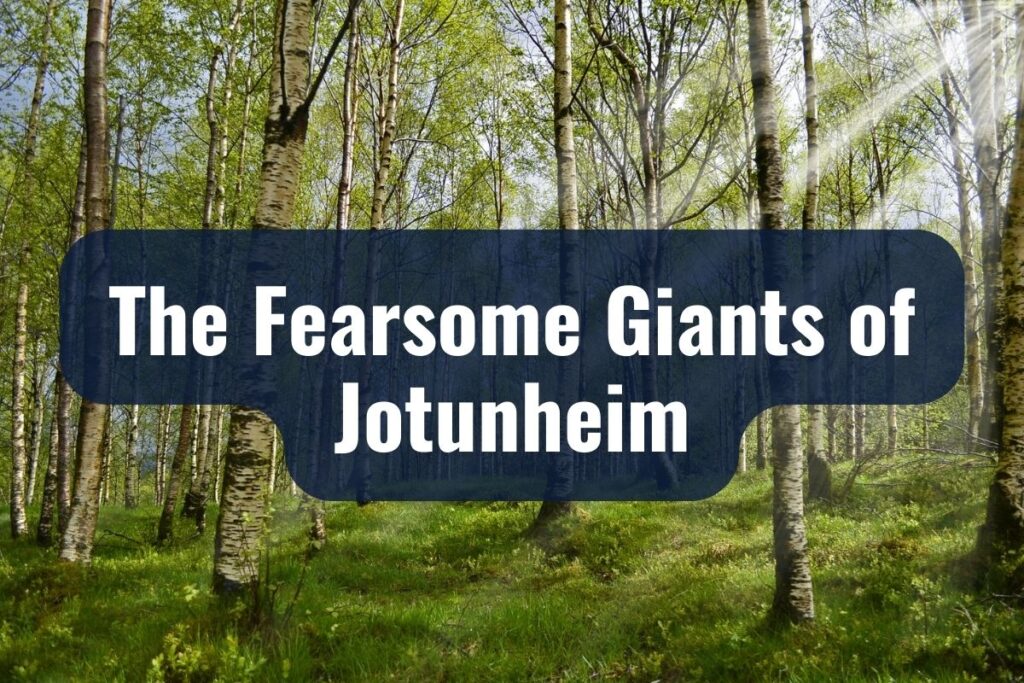Join us as we traverse this ancient landscape, uncovering the secrets and stories of Norse mythology’s most captivating creatures. In this article, we dive deep into the realm of these mythical creatures, bringing them to life with vivid descriptions and captivating tales.
Key Takeaways
- Norse mythology offers a rich tapestry of gods, giants, and mythical creatures, each embodying timeless themes.
- The Norse pantheon is deeply intertwined with mythical beings, reflecting the complexity of the myths.
- Each of the Nine Realms hosts unique creatures, symbolizing diverse aspects of the Norse cosmos.
- Dragons and serpents in Norse mythology represent power, destruction, and wisdom.
- Elves and Dwarfs illustrate the duality of nature, from radiant beauty to hidden depths.
- The giants of Jotunheim embody the raw, primal forces of nature and challenge the Norse gods.
Unveiling the Creatures of Myth
At the heart of these sagas are creatures as fascinating as they are formidable, each woven into the myths with purpose and prowess. From the mighty dragons that coil around the roots of Yggdrasil, the world tree, to the elusive elves dwelling in ethereal realms, these beings are more than mere characters; they are symbols of the fears, hopes, and dreams of the Norse people.
A Journey Beyond the Realms
Our exploration will not only introduce you to the most famous beings of Norse mythology but also the lesser-known, yet equally enchanting, creatures that roam the nine realms. Each story, each creature, is a piece of a larger puzzle, offering insights into a world where magic is real, gods walk among us, and mythical beasts roam free.
The Pantheon of Norse Gods and Their Roles

| Norse God | Role | Associated Creature |
| Odin | Wisdom and War | Ravens (Huginn and Muninn) |
| Thor | Thunder and Strength | Jörmungandr (Midgard Serpent) |
| Freyja | Love and War | Cats (Chariot Pullers) |
Gods of Might and Mystery
In Norse mythology, the gods are not just distant deities; they are vibrant, complex characters who interact closely with both the mortal world and the realm of mythical creatures.
Odin: The All-Father and His Winged Companions
Odin, the wise and warlike ruler of the gods, is a figure of immense complexity and power. Known as the All-Father, he is as much a god of wisdom as he is of war.
Perched on his shoulders are Huginn and Muninn, two ravens representing thought and memory. These birds fly across the worlds daily, bringing back news to their master. They symbolize Odin’s far-reaching wisdom and his deep connection to the mystical realm of creatures and knowledge.
Thor: The Thunderer and His Serpentine Foe
Thor, the mighty god of thunder, is renowned for his battles against formidable creatures. Among his most famous adversaries is Jörmungandr, the Midgard Serpent.
This immense snake encircles the world, biting its tail, and is destined to fight Thor come Ragnarök. Their rivalry is not just a tale of strength and endurance but also a representation of the eternal struggle between order and chaos.
Freyja: The Enchantress and Her Chariot of Cats
Freyja, the goddess of love, fertility, and war, rides a chariot drawn by two large, magical cats. These creatures, often seen as symbols of mystery and independence, highlight Freyja’s multifaceted nature. Her association with cats also underscores the Norse culture’s reverence for animals as sacred beings with mystical qualities.
A Realm Ruled by Intrigue and Interaction
The Norse gods are inextricably linked with the realm’s creatures, both great and small. Their interactions with these beings are not just tales of conflict or dominion but also mutual respect, dependency, and sometimes, deception. This relationship highlights a world where the divine and the mystical are forever intertwined, each shaping the other’s destiny.
Legendary Creatures of the Nine Realms
A Cosmos of Wonder and Intrigue
In Norse mythology, the universe is divided into nine realms, each home to its own unique and mesmerizing creatures. These realms, interconnected by the cosmic tree Yggdrasil, are a testament to the diversity and imagination of Norse legend. From the icy wastes of Jotunheim to the mystical shores of Alfheim, each realm boasts beings as enchanting as they are fearsome.
Midgard: The Human Realm and Its Guardian
Midgard, the realm of humans, is protected by Jörmungandr, the colossal Midgard Serpent. This immense creature, lying in the ocean surrounding the world, is a symbol of the boundaries between the known and the unknown, the civilized and the wild. It is said that when Jörmungandr releases its tail, the end of the world, Ragnarök, will begin.
Asgard: Home of the Aesir and Winged Steeds
Asgard, the domain of the gods, is not just a place of divine beings but also of wondrous creatures. Among them are the Valkyries’ horses, known for their incredible speed and ability to navigate the skies. These steeds embody the glory and majesty of Asgard, serving as a bridge between the gods and the mortal world.
Jotunheim: The Land of Giants and Frost Beasts
Jotunheim, the realm of the giants, is a land of extremes. Here, the giants, or Jotnar, live alongside mythical beasts such as the frost giants’ wolves and ice serpents. These creatures, embodying the raw power of nature, are often depicted as adversaries of the gods, adding to the realm’s aura of danger and mystery.
Alfheim and Svartalfheim: Realms of the Elves
Alfheim, the luminous home of the light elves, is a place of ethereal beauty and magic. The light elves, beings of radiant light and goodness, are often seen as guardians of nature and art.
In contrast, Svartalfheim, the realm of the dark elves or Dwarves, is a place of deep caves and ancient forges. The Dwarves are master craftsmen, known for creating magical artifacts that play pivotal roles in many Norse myths.
A Mosaic of Mythical Life
Each realm within the Norse cosmos contributes its unique creatures to the mythological tapestry. These beings, from the smallest elf to the mightiest dragon, are not just inhabitants of their respective worlds; they are integral parts of a complex and interconnected universe, each playing a role in the grand narrative of Norse mythology.
Dragons and Serpents: Symbols of Power and Destruction

The Majestic Terror of Norse Dragons
In the shadows and beneath the roots of Norse mythology lie dragons and serpents, creatures that are as awe-inspiring as they are fearsome. These beings are not mere monsters; they are potent symbols of power, destruction, and the untamed forces of nature. Their stories are woven into the fabric of Norse myths, serving as stark reminders of the world’s dangers and mysteries.
Nidhogg: The Malice-Striker Under Yggdrasil
Nidhogg, the dragon that gnaws at the roots of Yggdrasil, the world tree, is a creature of paramount importance in Norse cosmology. This fearsome serpent represents the ever-present threat to the order of the cosmos, constantly seeking to undermine the foundations of the world.
Nidhogg’s relentless destruction and its role in Ragnarök, the end of the world, encapsulate the Norse understanding of the cyclical nature of creation and destruction.
Jörmungandr: The Midgard Serpent’s Cosmic Grip
Jörmungandr, the Midgard Serpent, is another iconic figure in Norse mythology. Encircling the world of Midgard, this massive snake symbolizes the boundaries that divide the different realms.
Its eternal struggle with Thor, the god of thunder, epitomizes the conflict between the forces of chaos and order. The serpent’s eventual release of its tail, signaling the onset of Ragnarök, is a powerful metaphor for the inevitable nature of change and upheaval.
Serpents as Portents of Change and Wisdom
Dragons and serpents in Norse mythology are not just symbols of destruction; they also embody wisdom and the transformative power of knowledge. These creatures, often guarding treasures or ancient secrets, challenge heroes and gods alike, forcing them to confront the limits of their power and understanding.
Fafnir: From Dwarf to Dragon
The tale of Fafnir, a dwarf who turned into a dragon to guard his hoarded treasure, is a compelling example of this transformation. Fafnir’s story is a cautionary tale about greed and its ability to dehumanize, turning man into a monster.
The dragon’s eventual slaying by the hero Sigurd is as much a battle of wits as it is of strength, highlighting the dual nature of these mythical beasts as both physical and intellectual challenges.
The Enduring Legacy of Norse Dragons
Dragons and serpents in Norse mythology are multifaceted symbols, representing the fearsome and awe-inspiring aspects of the natural world. Their stories, permeating Norse myths, continue to captivate and intrigue, serving as vivid reminders of the complex relationship between humans and the forces of nature.
The Enigmatic Elves and Dwarfs
Elves: The Luminous Guardians of Nature
In the ethereal realms of Norse mythology, elves hold a special place. These beings, known for their beauty and magical prowess, are divided into two distinct types: the Light Elves of Alfheim and the Dark Elves of Svartalfheim. Each type of elf embodies different aspects of the natural and mystical world.
Alfheim’s Light Elves: Beacons of Purity and Grace
The Light Elves, residing in the radiant realm of Alfheim, are often depicted as beings of unparalleled beauty and goodness. They are seen as guardians of nature, with a deep connection to the earth and its living creatures.
These ethereal beings are associated with healing, fertility, and the nurturing aspects of nature. Their presence is said to bring joy and light, symbolizing the life-giving energy of the sun and the rejuvenating power of nature.
Svartalfheim’s Dark Elves: Mysterious Masters of Magic
Contrasting the Light Elves are the Dark Elves, or Dwarfs, who dwell in the underground realm of Svartalfheim. These beings are renowned for their unparalleled skill in craftsmanship and metallurgy.
The Dwarfs are often depicted as master smiths and creators of some of the gods’ most powerful artifacts, including Thor’s hammer, Mjolnir, and Odin’s ring, Draupnir. Despite their reclusive nature, the Dwarfs play a crucial role in Norse mythology; their creations are often at the center of epic tales and divine endeavors.
Dwarfs: The Undersung Craftsmen of the Myths
The Dwarfs of Norse mythology, while often overshadowed by the more glamorous gods and creatures, are integral to the Norse cosmological narrative.
These beings represent the deep, hidden knowledge of the earth—both its treasures and its secrets. Their skill in crafting and shaping the elements reflects the transformative power of artisanship and the enduring value of skill and ingenuity.
The Dual Nature of Elves and Dwarfs
The Elves and Dwarfs of Norse mythology, though contrasting in their domains and dispositions, share a common trait: their enigmatic nature. They embody the dual aspects of the natural world—the visible beauty and the hidden depth, the light of the sun, and the darkness of the earth’s depths. Their presence in Norse myths serves as a reminder of the multifaceted nature of the world and the mysterious forces that operate within it.
The Fearsome Giants of Jotunheim

Jotunheim: The Land of Primeval Forces
In the rugged and untamed landscapes of Jotunheim, the giants, known as Jotnar in Norse mythology, reign supreme. This realm, characterized by its harsh and wild nature, is home to beings as ancient as the world itself. The giants embody the raw, untamed forces of nature—mountainous in their stature and as unpredictable as the elements they represent.
The Jotnar: A Diverse and Powerful Kin
The giants of Norse mythology are a diverse lot, ranging from the frost giants, masters of ice and cold, to the fire giants, wielders of flame and heat. These beings are not mere antagonists to the gods; they are complex characters with their own stories, wisdom, and power. They represent the necessary balance to the order of the Aesir, often challenging the gods and bringing about change through their colossal actions.
Loki: The Trickster Giant
Among the most renowned of the Jotnar is Loki, a figure of chaos and cunning. Loki, who straddles the line between god and giant, is a pivotal character in Norse mythology.
His mischief and machinations set many of the myths’ events in motion, revealing the intricate relationship between the giants and the gods. Loki’s shape-shifting nature and his ability to cross boundaries symbolize the fluidity and unpredictability of the forces that the giants represent.
Skadi: The Huntress of the Mountains
Skadi, a giantess known for her prowess in hunting and skiing, is another notable figure from Jotunheim. Her tale of seeking justice and her eventual marriage to a god highlight the complex interplay between the realms of the giants and the gods. Skadi embodies the fierce independence and the raw beauty of the natural world, much like the realm she hails from.
The Role of Giants in Norse Cosmology
The giants of Jotunheim play a crucial role in Norse mythology. They are the necessary counterbalance to the order of the Aesir, representing the chaotic and creative forces of nature.
Their interactions with the gods, ranging from conflict to kinship, reflect the dynamic and often unpredictable nature of the world. The giants, with their immense strength and deep connection to the primal elements, remind us of the power and mystery inherent in the natural world.
Magical Creatures: Trolls, Valkyries, and More

The Trolls: Mischievous Dwellers of the Wild
In the shadowed forests and mountain caves of Norse mythology, trolls lurk as embodiments of the wild and untamed aspects of nature. These beings, often portrayed as large and somewhat grotesque, are as mischievous as they are formidable.
Trolls in Norse legends are known for their strength, their cunning, and their affinity with the natural world. They represent the unknown dangers lurking in the wilderness, challenging heroes and gods alike with their brute force and tricky riddles.
Valkyries: The Choosers of the Slain
Soaring above the battlefield, the Valkyries are among the most iconic figures in Norse mythology. These warrior maidens, serving Odin, are tasked with selecting those who will die in battle and those who will be granted a place in Valhalla.
The Valkyries are symbols of valor and fate, embodying the glory of battle and the solemnity of death. They ride on winged horses, crossing the skies with grace and power—a sight both awe-inspiring and ominous.
The Lesser-Known Beings of Norse Lore
Norse mythology is teeming with a plethora of other magical creatures, each adding depth and color to the mythological landscape.
The Mare: Architects of Nightmares
The Mare, a lesser-known but intriguing creature, is said to bring nightmares to sleepers. This ethereal being, often depicted as a ghostly or demonic horse, embodies the dark side of the dream world. The Mare’s ability to traverse the boundaries of sleep and wakefulness makes it a creature of both fascination and fear.
The Kraken: Terror of the Seas
In the deep, dark waters of the Norse seas lurks the Kraken, a gigantic sea monster feared by sailors and fishermen alike. This enormous creature, capable of pulling entire ships into the abyss, represents the untamed and unknown dangers of the ocean. The Kraken, with its colossal size and terrifying presence, is a vivid reminder of the power and mystery of the sea in Norse mythology.
A Rich Tapestry of Mythical Beings
These creatures, from the cunning trolls to the majestic Valkyries, and from the nightmarish Mare to the fearsome Kraken, enrich the Norse mythological world. They bring to life the diverse aspects of the natural and supernatural realms, each with its own story and significance. Together, they form a rich tapestry of mythical beings, contributing to the enduring fascination with Norse legends.
The Influence of Norse Mythological Creatures in Modern Media
Myths Reimagined: Norse Creatures in Contemporary Culture
The captivating tales of Norse mythology, with their rich array of creatures, have not only survived through the ages but have also found new life in the realms of modern media. These ancient legends, with their timeless themes and vivid characters, continue to inspire, fascinate, and resonate with audiences today.
Blockbuster Movies and Television Series
In the world of cinema and television, Norse mythological creatures have taken center stage in numerous blockbuster hits. From the thunderous battles of gods and giants to the mysterious allure of elves and dwarves, these beings have been reimagined for the big screen.
They captivate viewers with their blend of ancient myth and modern storytelling, bringing the epic tales of Norse mythology to a global audience.
Literature and Graphic Novels
The literary world has also embraced the Norse mythos, weaving the tales of these creatures into new narratives. Fantasy novels and graphic novels frequently draw upon the rich lore of Norse mythology, reinterpreting and reinvigorating these ancient stories for new generations.
The creatures of Norse myths, from the cunning Loki to the mighty dragons, continue to be central figures in these modern tales, their stories evolving yet remaining deeply rooted in their mythological origins.
Video Games: Interactive Norse Mythologies
In the realm of video games, Norse mythology has found a particularly dynamic and interactive medium. Players can explore the worlds of gods and monsters, experiencing the myths firsthand.
These games often incorporate detailed renditions of mythological creatures, allowing players to engage with them in ways that are both immersive and imaginative. The interactive nature of video games provides a unique platform for bringing Norse mythology to life, blending ancient lore with cutting-edge technology.
The Enduring Appeal of Norse Myths
The enduring popularity of Norse mythological creatures in modern media is a testament to the universal appeal of these ancient stories. They capture the imagination with their themes of heroism, adventure, and the mystical, transcending time and culture.
As they continue to be reinterpreted in movies, literature, and games, these creatures remind us of the power of myth to inspire, entertain, and provoke thought in every era.
Exploring the Legacy of Norse Mythology Today

The Timeless Resonance of Ancient Myths
Norse mythology, with its pantheon of gods and a myriad of mythical creatures, continues to echo through the ages, resonating with people across the world.
This ancient body of lore, steeped in mystery and adventure, remains as relevant today as it was in the days of the Vikings. Its enduring legacy is a testament to the universal themes and timeless stories it contains.
A Cultural and Historical Treasure
Norse mythology is not just a collection of tales; it is a crucial part of the cultural and historical heritage of the Nordic region. Museums, art galleries, and historical sites across Scandinavia pay homage to these myths, preserving and celebrating the rich Norse heritage.
These stories passed down through generations, form an integral part of the Norse cultural identity, offering insights into the beliefs, values, and imaginations of the ancient Norse people.
Norse Mythology in Education and Scholarship
In the realms of education and academic scholarship, Norse mythology continues to be a subject of fascination and study. It offers valuable insights into the ancient Norse language, society, and worldview.
Scholars and students alike delve into these myths, exploring their historical context, literary value, and influence on other cultures and mythologies.
The Spiritual and Philosophical Impact
Beyond its historical and cultural significance, Norse mythology has a profound spiritual and philosophical impact. For many, these ancient tales offer more than just entertainment; they provide a connection to the past, a sense of belonging, and a framework for understanding the world.
The stories of gods, giants, and mythical creatures are often seen as metaphors for human experiences and natural phenomena, offering wisdom and perspective on life’s challenges and mysteries.
Norse Mythology: A Living Legacy
The legacy of Norse mythology is not confined to the past; it is a living, evolving tradition. As new generations discover these ancient tales, they find fresh meaning and relevance in them.
Whether through modern media, cultural events, or personal exploration, the stories of Norse mythology continue to inspire, educate, and enchant, proving that these ancient tales are indeed timeless.
Closing Thoughts
The Enduring Allure of Norse Myths
As we conclude our exploration of the fascinating world of Norse mythology, it’s clear that the allure of these ancient tales goes beyond mere entertainment.
These myths, rich with gods, giants, and an array of mythical creatures, offer a window into a world where the fantastical is possible and the boundaries between the natural and supernatural blur. They invite us to imagine, to wonder, and to delve into the depths of our imagination.
A Journey of Discovery and Inspiration
This journey through Norse mythology is more than a recounting of old tales; it’s an invitation to discover a rich cultural heritage, to find inspiration in the stories of old, and to see the world through a lens of wonder and mystery.
The creatures of Norse myths, from the mighty dragons to the elusive elves, from the fearsome giants to the valiant Valkyries, each tell a story that resonates with timeless themes of heroism, adventure, and the exploration of the unknown.
The Living Legacy of Norse Mythology
The legacy of Norse mythology is not confined to the pages of history; it lives on in the hearts and minds of those who continue to be captivated by these ancient tales. In a world where technology and science dominate, these myths remind us of the power of storytelling, the importance of tradition, and our enduring fascination with the mysteries of the universe.
An Invitation to Continue the Exploration
As we bid farewell to the realm of Norse gods and their mythical counterparts, let this not be an end but a beginning. May the tales of Odin, Thor, Loki, and the myriad creatures that inhabit the Nine Realms inspire you to continue exploring, delve deeper into the rich tapestry of Norse mythology, and find your meaning in these timeless stories.
Norse mythology, with its intricate blend of the mythical and the real, continues to enchant and inspire, proving that the ancient tales of the North are as captivating now as they were centuries ago.


